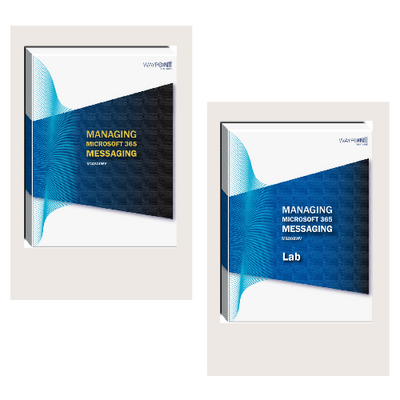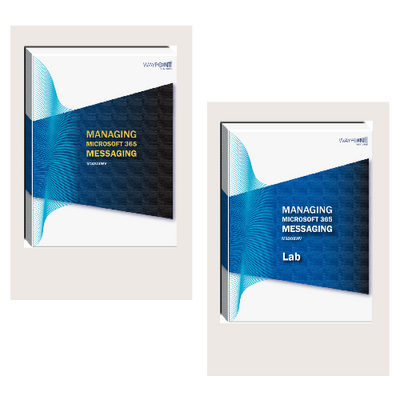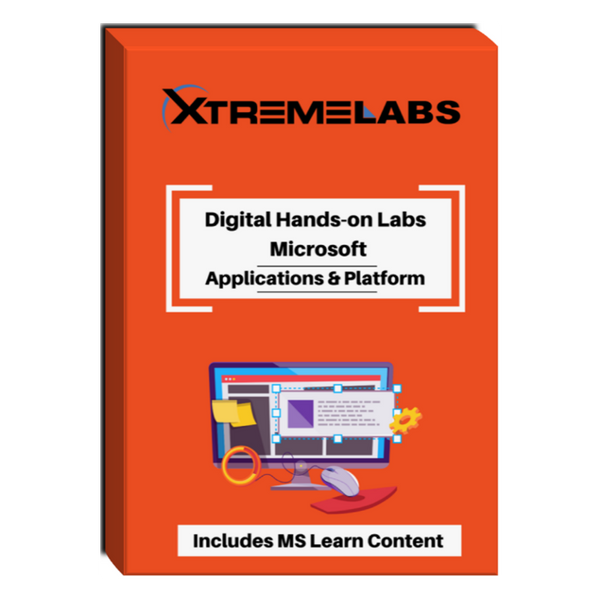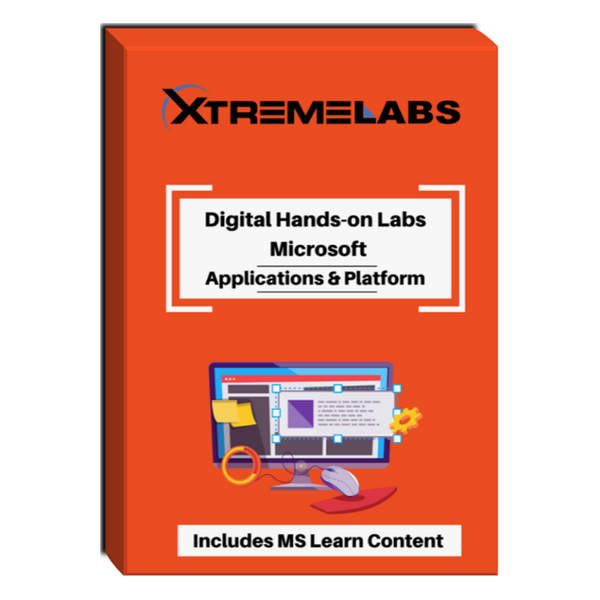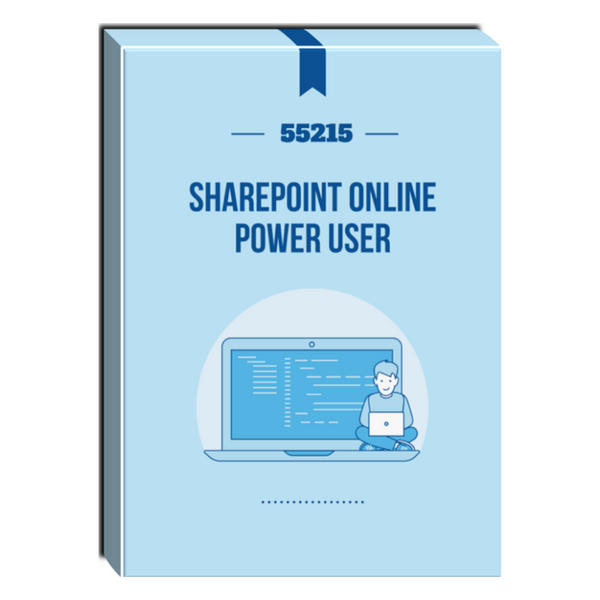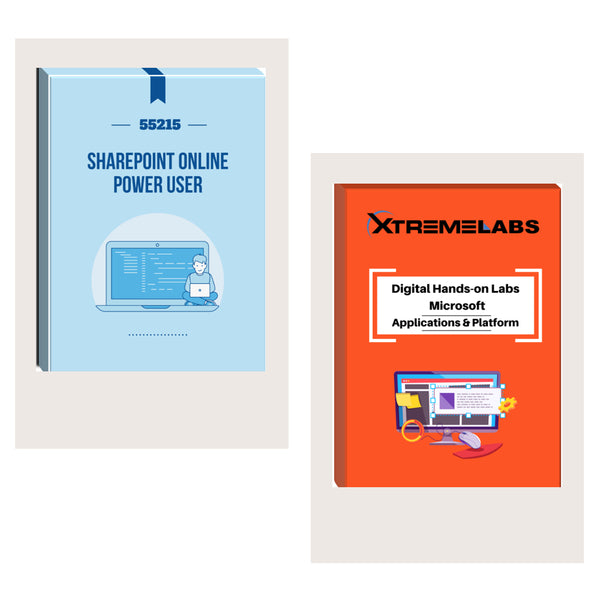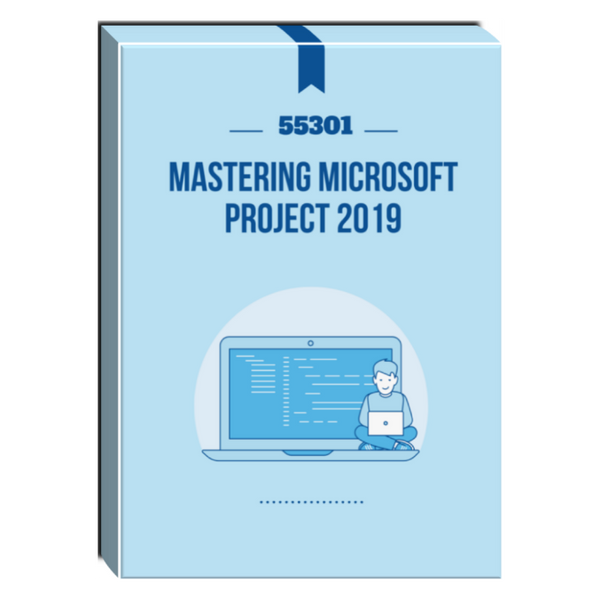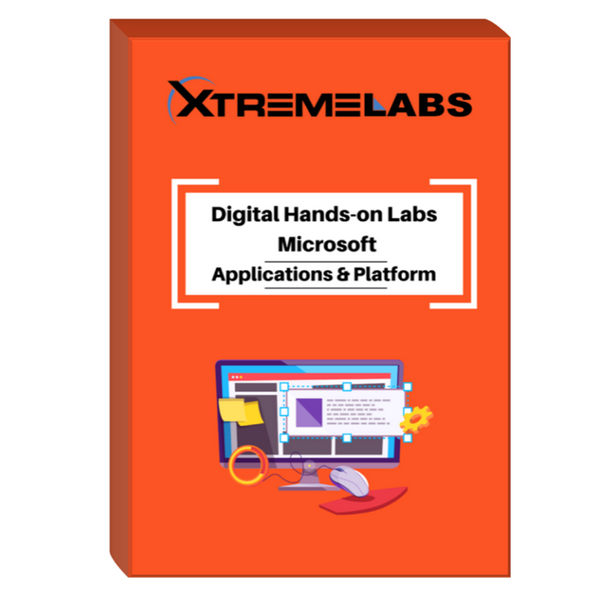Tags: Courseware , Microsoft 365 , microsoft 365 messaging certification , ms 203t00 microsoft 365 messaging , New Release
MS203WV: Managing Microsoft 365 Messaging Courseware
- Brand: Waypoint Ventures, LLC
- Availability: In Stock
$195.15
RECENTLY UPDATED January 2025 This three-day course provides a detailed description of the key components of the Microsoft 365 messaging service, Exchange Online. It describes how messaging administrators can use Exchange Online to perform various configuration tasks to manage, help secure, monitor, and troubleshoot mail flow. Students will learn how...
- Describe Exchange Online and explain how it compares to Microsoft Exchange Server.
- Create and manage Exchange Online recipient objects and policies.
- Manage administrator and user roles in Exchange Online.
- Manage authentication and security in Microsoft Entra ID.
- Manage domains, connectors, and mail flow in Exchange Online.
- Plan and manage message security and encryption in Exchange Online.
- Implement data loss prevention (DLP), retention and archive policies, and auditing in Exchange Online.
- Configure and troubleshoot client access in Exchange Online.
Audience profile
Course Details
Course Duration: 3 Days
Module 1 Overview of Exchange Online
In this module, you’ll explore the various services that Microsoft 365 provides. You’ll learn the basics of Exchange Online and the administration tools you can use to manage this service.
Lesson 1 Introduction to Microsoft 365 services
- What is Microsoft 365?
- Overview of Microsoft 365 workloads
- Overview of Microsoft 365 subscriptions
- Provisioning a Microsoft 365 tenant
By completing this lesson, you’ll achieve the knowledge and skills to:
- Describe Microsoft 365.
- Describe key workloads running within Microsoft 365.
- Describe Microsoft 365 subscriptions.
- Explain how to provision a Microsoft 365 tenant.
Lesson 2 Introduction to Exchange Online
- Overview of Exchange Online
- How does Exchange Online compare to Exchange Server?
- Key reasons to use Exchange Online
- What is Exchange hybrid deployment?
- Organization relationships in Exchange Online
By completing this lesson, you’ll achieve the knowledge and skills to:
- Describe Exchange Online.
- Explain how Exchange Online compares to Exchange Server.
- Describe key reasons to use Exchange Online.
- Describe an Exchange hybrid deployment.
- Describe organization relationships in Exchange Online.
Lesson 3 Overview of Exchange Online administration tools
- Microsoft 365 admin center
- Exchange admin center
- Managing Microsoft 365 and Exchange Online with PowerShell
By completing this lesson, you’ll achieve the knowledge and skills to:
- Describe the Microsoft 365 admin center.
- Describe the Exchange admin center.
- Describe the Exchange Management Shell.
Lab Exploring Microsoft 365 and Exchange Online admin portals
- Exercise 1: Provisioning a Microsoft 365 tenant
- Exercise 2: Adding products and licenses to a Microsoft 365 tenant
- Exercise 3: Reviewing Microsoft 365 and Exchange admin centers
- Exercise 4: Managing Exchange Online with PowerShell
- Exercise 5: Assigning product licenses to users
By completing this lab, you’ll achieve the knowledge and skills to:
- Create an Office 365 E5 trial subscription.
- Add licenses and products for additional features and cloud services.
- Review the Microsoft 365 and Exchange admin centers.
- Install Exchange Online PowerShell and run scripts.
- Assign licenses to the users in your tenant.
- Overview of recipient object types in Exchange Online
- Overview of user mailboxes
- Overview of resource mailboxes
- Overview of shared mailboxes
- Overview of linked mailboxes
- Overview of mail contacts and mail users
- Managing groups in Exchange Online
- Overview of public folders
- Identify the various recipient types in Exchange Online.
- Describe user mailboxes.
- Describe resource mailboxes.
- Describe shared mailboxes.
- Describe linked mailboxes.
- Describe contacts and mail users.
- Explain how to manage groups in Exchange Online.
- Describe public folders.
- Creating and managing user mailboxes and mailbox settings
- Creating and managing resource mailboxes
- Creating and managing shared mailboxes
- Creating and managing contacts
- Creating and managing groups
- Creating and managing public folders
- Create and manage user mailboxes and mailbox settings.
- Create and manage resource mailboxes.
- Create and manage shared mailboxes.
- Create and manage contacts.
- Create and manage groups.
- Create and manage public folders.
- Exercise 1: Creating a new user mailbox
- Exercise 2: Managing user mailbox settings
- Exercise 3: Creating and managing groups by using the Exchange admin center
- Exercise 4: Creating Exchange Resources and Contacts
- Exercise 5: Validating Email Functionality
- Add new users to your Microsoft 365 tenant.
- Modify mailbox settings.
- Create a Microsoft 365 group, a distribution list, a dynamic distribution list, and a Mail-enabled security group.
- Add additional Exchange recipients in your Microsoft 365 tenant.
- Validate that email messages can be delivered successfully and room resources work as expected.
- Overview of address lists in Exchange Online
- Creating and managing address lists
- Creating and managing address books and address book policies
- Configuring offline address books
- Describe address lists in Exchange Online.
- Create and manage address lists.
- Create and manage address books and address book policies.
- Configure offline address books.
- Exercise 1: Creating address lists
- Exercise 2: Creating and assigning Address book policies
- Create address lists.
- Create a custom address book policy.
- Overview of the Exchange Online permission model
- Microsoft 365 or Office 365 permissions in Exchange Online
- What is RBAC?
- Implementing RBAC for Applications in Exchange Online
- Describe the Exchange Online permission model.
- Describe Microsoft 365 or Office 365 permissions in Exchange Online.
- Describe RBAC.
- Implement RBAC for Applications in Exchange Online.
- What are role groups and management role groups?
- Built-in role groups in Exchange Online
- Creating and managing role groups in Exchange Online
- Feature permissions in Exchange Online
- Describe role groups and management role groups.
- Describe built-in role groups in Exchange Online.
- Create and manage role groups in Exchange Online.
- Implement feature permissions in Exchange Online.
- Overview of Exchange Online user roles
- Implementing user roles with role assignment policies
- Managing roles and role assignment policies
- Describe Exchange Online user roles.
- Implement user roles with role assignment policies.
- Implement management role assignment policies.
- Exercise 1: Reviewing and assigning Admin Roles in Microsoft 365
- Exercise 2: Creating and managing role groups in Exchange Online
- Exercise 3: Managing user roles with role assignment policies
- Review the built-in admin roles in Microsoft 365 and simplify role management.
- Review role groups that are available specifically in Exchange Online and create a custom role group.
- Create a custom role assignment policy and assign it to users.
- Overview of Microsoft Entra ID
- Authentication with Microsoft Entra ID
- Authentication methods in Microsoft Entra ID
- Managing user objects and user settings in Microsoft Entra ID
- Managing group objects and group settings in Microsoft Entra ID
- Describe Microsoft Entra ID.
- Describe the supported authentication types in Microsoft Entra ID.
- Describe the authentication methods in Microsoft Entra ID.
- Manage user objects and user settings in Microsoft Entra ID.
- Manage group objects and group settings in Microsoft Entra ID.
- What is MFA?
- What is conditional access?
- Creating conditional access policies
- Overview of Privileged Identity Management
- Implementing password protection
- Implementing self-service password reset
- Microsoft Entra ID security defaults
- Describe MFA.
- Describe conditional access and conditional access policies.
- Create conditional access policies.
- Describe PIM.
- Implement password protection.
- Implement SSPR.
- Describe Microsoft Entra ID security defaults.
- Authentication in Exchange Online
- Authentication in Exchange hybrid deployments
- Enabling hybrid modern authentication
- Describe authentication in Exchange Online.
- Describe authentication in Exchange hybrid deployments.
- Describe how to enable hybrid modern authentication.
- Exercise 1: Managing objects and reviewing authentication methods in Microsoft Entra ID
- Exercise 2: Configuring SSPR
- Exercise 3: Enforcing multifactor authentication by using a conditional access policy
- Create new user and group accounts and review authentication methods and security defaults.
- Configure and perform password resets.
- Configure and validate MFA by using a conditional access policy.
- Configuring and managing SMTP domains for Exchange Online
- Overview of remote domains
- Overview of connectors
- Configuring and managing connectors in Exchange Online
- Configure and manage SMTP domains for Exchange Online.
- Describe remote domains.
- Describe connectors.
- Configure and manage connectors in Exchange Online.
- Overview of mail flow in Exchange Online
- Managing mail flow in hybrid scenarios
- Overview of mail flow rules
- Configuring and managing mail flow rules
- Using mail flow rules for specific scenarios
- Describe mail flow in Exchange Online.
- Manage mail flow in hybrid scenarios.
- Describe mail flow rules.
- Configure and manage mail flow rules.
- Use mail flow rules for specific scenarios.
- Exercise 1: Configuring Connectors to manage mail flow
- Exercise 2: Configuring Mail flow rules
- Exercise 3: Validating mail flow rules
- Create new connectors to send and receive email.
- Configure rules to redirect email, add email disclaimers, and configure rule application based on email details.
- Validate mail flow rules.
- Troubleshooting mail flow
- Message tracing in Exchange Online
- Exchange Online reporting
- Monitoring Exchange Online with Microsoft Service Health
- Alert policies and alerts in Exchange Online
- Troubleshoot mail flow.
- Implement message tracing.
- Use reports in Exchange Online.
- Monitor Exchange Online with Microsoft Service Health.
- Describe alerts and alert policies.
- Exercise 1: Monitoring Exchange Health and mail flow
- Exercise 2: Troubleshooting Exchange Online mail flow
- Review features used to monitor Exchange Online health and mail flow, and create an alert policy.
- Troubleshoot Exchange Online mail flow by using the Microsoft Remote Connectivity Analyzer and Message trace.
- Overview of Exchange Online Protection
- Planning mail flow for Exchange Online Protection
- How does email protection work?
- Describe Exchange Online Protection.
- Plan mail flow for Exchange Online Protection.
- Explain how email protection works.
- What is Microsoft Defender?
- Overview of Microsoft Defender for Office 365
- How threat protection works in Microsoft Defender for Office 365
- What is Microsoft Defender for Identity?
- Attack simulation in Microsoft Defender for Office 365
- Describe Microsoft Defender.
- Describe Microsoft Defender for Office 365.
- Explain how threat protection works in Microsoft Defender for Office 365.
- Describe Microsoft Defender for Identity.
- Describe attack simulation in Microsoft Defender for Office 365.
- Preset security policies in Exchange Online Protection and Microsoft Defender for Office 365
- Managing and configuring anti-spam protection
- Managing and configuring anti-malware protection
- Managing and configuring spoofing protection
- Managing and configuring phishing protection
- Configuring Safe Attachments
- Configuring Safe Links
- Configuring connection filtering
- Configuring outbound spam protection
- Configuring quarantine and quarantine policies
- Explain the preset security policies in Exchange Online Protection and Microsoft Defender for Office 365.
- Manage and configure anti-spam protection.
- Manage and configure anti-malware protection.
- Manage and configure spoofing protection.
- Manage and configure phishing protection.
- Configure Safe Attachments.
- Configure Safe Links.
- Configure connection filtering.
- Configure outbound spam protection.
- Configure quarantine and quarantine policies.
- Exercise 1: Running an email attack simulation
- Exercise 2: Configuring preset security policies
- Exercise 3: Removing preset security policies
- Run email attack simulations and ensure the assignment of required Microsoft-recommended training to users.
- Review and configure preset security policies.
- Turn off and disable preset security policies.
- How does message encryption work in Exchange Online?
- Implementing message encryption in Exchange Online with Microsoft Purview
- Managing message encryption
- Managing advanced message encryption in Exchange Online
- Explain how message encryption works in Exchange Online.
- Implementing Microsoft Purview Message Encryption.
- Manage message encryption.
- Manage advanced message encryption in Exchange Online.
- Exercise 1: Creating a custom quarantine policy
- Exercise 2: Configuring threat policies
- Exercise 3: Configuring Microsoft Purview Message Encryption
- Create and configure custom quarantine policies and review quarantined messages.
- Create policies for Anti-phishing, Anti-spam, Anti-malware, Safe Attachments, and Safe Links.
- Validate that Purview message encryption is enabled and create a mail flow rule configured to apply encryption to senders.
- Overview of DLP
- How do DLP rules work?
- DLP policy templates in Exchange Online
- Creating DLP policies
- Configuring and managing policy tips
- Describe data loss prevention (DLP).
- Describe how DLP works.
- Manage DLP policy templates in Exchange Online.
- Create DLP policies.
- Configure and manage DLP policy tips.
- Overview of data lifecycle management
- Overview of Microsoft 365 retention policies
- Creating and managing retention policies in Microsoft 365
- Overview of retention policies in Exchange Online
- Overview of Exchange Online journaling
- Describe data lifecycle management.
- Describe retention policies in Microsoft 365.
- Create and manage retention policies in Microsoft 365.
- Describe retention policies in Exchange Online.
- Describe journaling in Exchange Online.
- Overview of sensitive information types
- What are sensitivity labels?
- Creating and publishing sensitivity labels
- Using sensitivity labels to apply encryption
- Describe sensitive information types.
- Describe sensitivity labels.
- Create and publish sensitivity label.
- Use sensitivity labels to apply encryption.
- Overview of Microsoft Purview eDiscovery
- Overview of content search
- Creating and running a content search
- Previewing and exporting search results
- Creating and managing eDiscovery holds for Exchange Online
- Describe Microsoft Purview eDiscovery.
- Describe Content Search.
- Create and run Content Search.
- Preview and export search results.
- Create and manage eDiscovery holds for Exchange Online.
- Exercise 1: Protecting and classifying Exchange messages by using sensitivity labels
- Exercise 2: Configuring Data Loss Prevention policies
- Exercise 3: Creating and managing an eDiscovery case
- Create and publish sensitivity labels.
- Create sensitive info types and Data loss prevention (DLP) policies.
- Perform eDiscovery holds and searches.
- Overview of auditing in Exchange Online
- Managing mailbox audit logs
- Managing litigation hold
- Managing administrator audit logging
- Describe auditing in Exchange Online.
- Manage mailbox audit logs.
- Manage litigation hold.
- Manage administrator audit logs.
- Exercise 1: Enabling In-place archive for user mailboxes
- Exercise 2: Configuring and publishing Microsoft 365 retention labels
- Enable in-place archive and validate the default messaging records management (MRM) retention policy setting.
- Create and publish Microsoft 365 retention labels.
- Overview of Outlook for PC and Outlook for Mac
- Outlook for iOS and Android clients
- Overview of Exchange ActiveSync, POP3, and IMAP4 clients
- Modern authentication with mobile clients
- Securing Outlook for iOS and Android in Exchange Online
- S/MIME for Outlook for iOS and Android in Exchange Online
- Describe Outlook for PC and Outlook for Mac.
- Describe Outlook for iOS and Android clients.
- Describe Exchange ActiveSync, POP3, and IMAP4 clients.
- Implement modern authentication with mobile clients.
- Secure Outlook for iOS and Android in Exchange Online.
- Describe S/MIME for Outlook for iOS and Android in Exchange Online.
- Outlook on the web in Exchange Online
- Creating and managing Outlook web app policies in Exchange Online
- Public attachment handling in Exchange Online
- Describe Outlook on the web in Exchange Online.
- Create and manage Outlook on the web policies in Exchange Online.
- Manage public attachment handling in Exchange Online.
- Overview of Remote Connectivity Analyzer
- Client Access Rules in Exchange Online
- Modern authentication for Outlook in Exchange Online
- Use the Microsoft Remote Connectivity Analyzer.
- Implement Client Access Rules in Exchange Online.
- Describe modern authentication for Outlook in Exchange Online.
- Exercise 1: Configuring Outlook Web App Policies
- Exercise 2: Managing Microsoft 365 app installations
- Create and configure Outlook Web App Policies.
- Configure Microsoft 365 app installation options.
Instructor Material including PowerPoint Slides are available.

